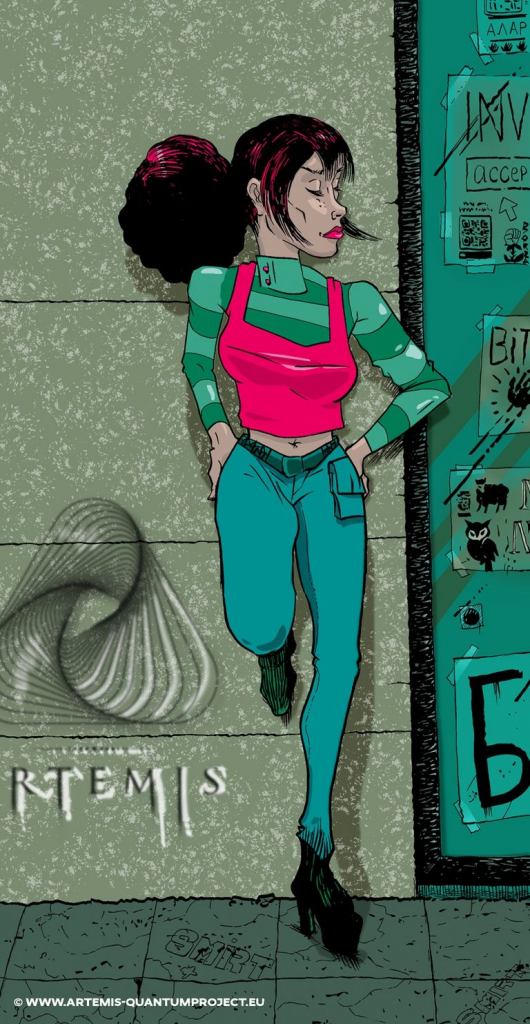
The ARTEMIS European project in which the Institute’s researchers led by Dr Branko Kolarić participate, dedicated to quantum mechanics, launched cooperation with comic book artists as well.
On this occasion, Dr Antonietta Ferrara of the National Research Council (CNR), coordinator of the ARTEMIS Project, discusses the significance of comics and graphic art in illustrating physics-related phenomena:
‘By combining visual elements and storytelling, we can explain complex concepts more easily and in a more engaging and accessible manner. Comics are particularly effective in reaching a broad audience which includes those without a scientific background. They simplify research concepts and spark curiosity, therefore in the ARTEMIS project, they are perceived as a creative bridge between researchers and the public. Complex ideas are turned into stories that inspire and inform.’
Belgian graphic artist Steven Tossyn, who is also involved in the ARTEMIS project, shared his thoughts on comics as a tool for scientific communication:
’When Albert Einstein and Charlie Chaplin met in 1931, Einstein said: What I most admire about your art is your universality. You don’t say a word yet the whole world understands you. Chaplin replied: That is true. However, your glory is even greater. The whole world admires you although they do not understand a word you say.’
Tossyn emphasizes that this is precisely why everyday art forms, including comics, can help us understand the abstract. They immerse easily and in a more accessible way and most of us understand their conventions. We are familiar with the speaking bubble and we can understand whether a cartoon character is speaking, shouting or dreaming.
‘There are no constraints or barriers in comics – there is no need to test and check what an artist puts on the paper. That’s why Tintin landed on the Moon in 1953—16 years before humanity’s first lunar landing. Cartoon characters allow ideas to take shape in a simple, exciting, and often humorous way.
For years, illustrators have depicted extraterrestrial life, made characters invisible with a snap of a finger, and used black holes and time machines to travel through space and time and teleport into different dimensions—all without breaking a sweat. Now, we are just waiting for brilliant scientists to turn these visions into reality.’




